We have much more to do and your continued support is needed now more than ever.
Seven! Wildlife Species That Help People
Here at the National Wildlife Federation, we celebrate all species that form the great web of life—of which people are one part. As scientists continue to discover the ways wildlife benefit us, we might explore how to return the favor. These seven examples of wildlife that help people are also in trouble. They’re either already endangered or could become endangered without proactive conservation.
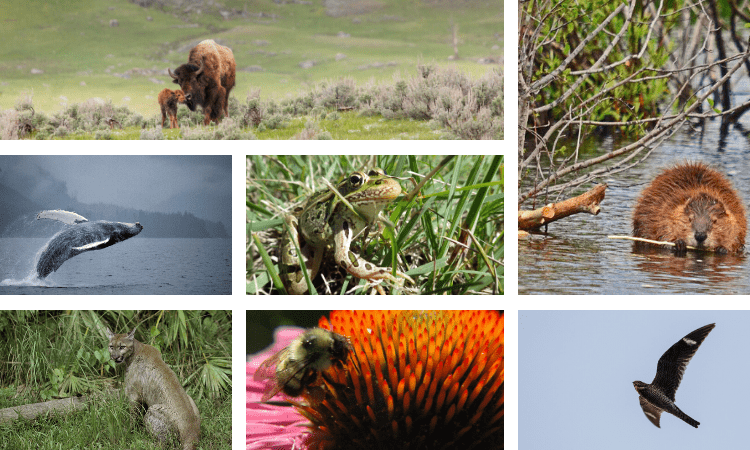
Each one will get the boost they need—if we step up to pass the Recovering America’s Wildlife Act in 2020. Let’s speak up for the mighty seven today—whales, bison, nighthawks, beavers, leopard frogs, Florida panthers, and bumble bees! Tell your representative in Congress to put their full support behind the Recovering America’s Wildlife Act.
Take Action!
1. Whales (many kinds) store carbon and fight climate change
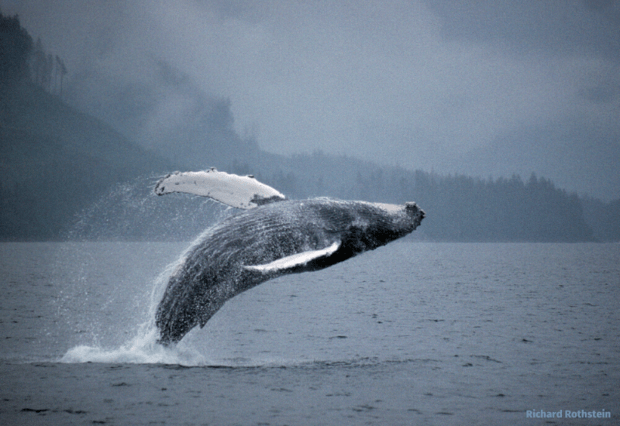
Great whales (like humpback and blue whales) stockpile tons of carbon within their fat and protein-rich bodies. When whales die and sink to the bottom, the stored carbon goes with them. Whales that feed on plankton and krill also release huge plumes of nutrients that help phytoplankton (tiny marine plants) grow. In turn, phytoplankton produce more than half the world’s oxygen and capture carbon, too.
Whaling decimated many species that are slowly recovering, but now these magnificent creatures face warming seas, entanglement in fishing gear, vessel strikes, underwater noise, and ocean pollution. Recovering America’s Wildlife Act will give coastal states critical funding to address threats.
2. Bison help prairies recover
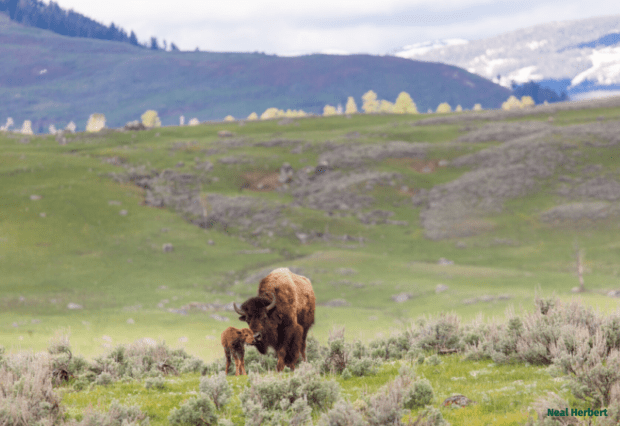
Pawing, wallowing, and grazing our vastly diminished western prairies, bison spread seeds, aerate soils, stimulate plant growth, and shape the natural habitats for prairie grasses and flowers. Bison help create the habitat conditions necessary for wildlife like regal fritillary butterflies, grasshopper sparrows and ornate box turtles to have a home. Restored prairies filter water, slow flooding, store carbon, and support local jobs and recreation.
No longer do tens of millions of bison roam the Great Plains, but several states and Native American tribes are working for their comeback. Today, thousands of bison range in more than 50 conservation herds in North America.
3. Common nighthawks eat flying insects

Nighthawks swoop and glide as night falls. They open their mouths wide and scoop up flying insects—from mosquitoes to wasps. In cities, nighthawks take advantage of bright lights that attract insects. While insects play an important role in the ecosystem, so do birds like nighthawks that keep numbers in check.
Sadly, nighthawks join other birds across the country experiencing widespread declines. Birds that catch insects on the wing –which includes nighthawks and others like swallows and flycatchers—have shown a loss of 32% in numbers since 1970 – or 160 million fewer birds. Nighthawks fly all the way to southern South America each winter—one of the longest migration routes of all North America’s birds. Conserving their ground nesting habitats is key to their recovery.
4. Beavers store water, fight drought, and help salmon
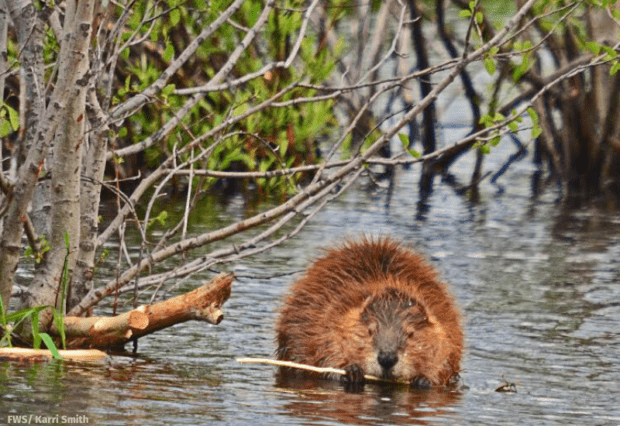
Superheroes of our streams and rivers, beavers build natural dams that store water for late season flows—assuring critical water supplies. With less mountain snowpack in a warming climate, we need beavers more than ever to combat drought. The ponds behind their dams also filter pollution, slow down floods, work like firebreaks to stop wildfires, reduce erosion, and serve as trout and salmon nurseries.
Many states are bringing beavers back—transporting them to headwaters of rivers where they used to live before trapping wiped out populations. On Washington’s Puget Sound, biologists are reintroducing beavers to help baby wild salmon survive. By slowing down waters and creating ponds, the little salmon can stay put and grow, rather than being washed downstream. A study in Utah found that restoring beavers to just one river basin resulted in tens of millions of dollars of economic benefits each year!
5. Northern Leopard Frogs are Clean Water Indicators
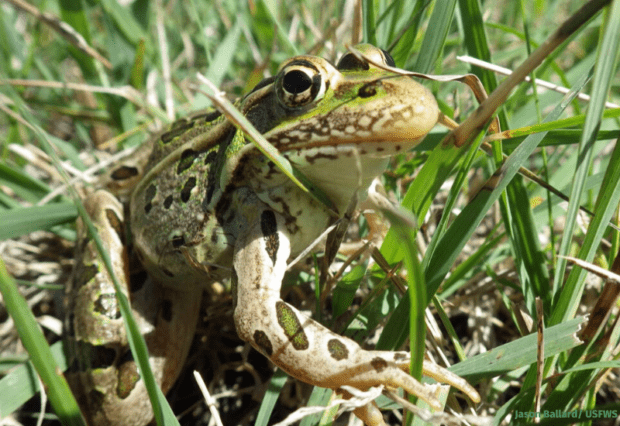
If you see these frogs hopping into a pond, you know the water quality is good, because they can’t survive in polluted, dirty waters. They live across North America by ponds and marshes and sometimes explore nearby grasses. They snap up all kinds of prey, from flies to other frogs. When we protect water from pollutants to care for northern leopard frogs, we are keeping our drinking water clean and conserving wetlands that help curb pollutants, slow flooding, and support a cornucopia of life—from frogs and turtles, to great blue herons and ducks.
Northern leopard frog numbers plummeted, starting in the 1970s, and especially in Canada and western states. Scientists believe pollution, deforestation, and acidity of water are factors. Bringing back these fabulous frogs does something else that goes beyond dollar value: giving children the chance to play in ponds where water is pure and hopping frogs plentiful.
6. Florida Panthers Keep Feral Hogs in Check
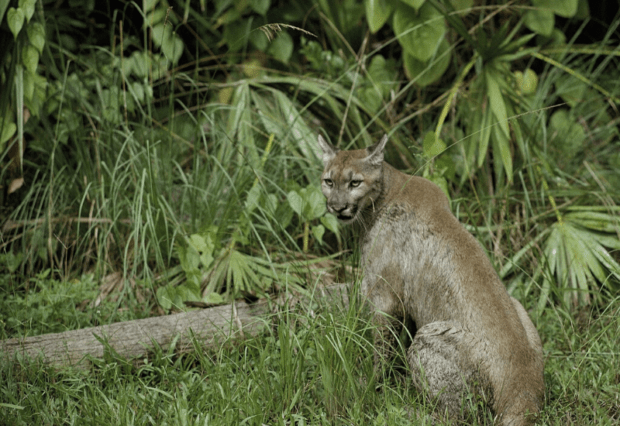
The highly endangered panther dwells in southern Florida swamps, including the Everglades National Park. Like all pumas, this panther can take on some mighty prey, including feral hogs that rip up wetlands, destabilize banks, and outcompete other native wildlife. Florida panthers also keep populations of deer, raccoons, and other prey in balance.
Once, these panthers padded throughout the Southeast woods and swamps, but persecution and habitat loss took their toll. We do have reason for hope. When listed under the Endangered Species Act in 1973, fewer than three dozen remained in the wild. Today, there are close to 200, as partners step up to conserve habitat. Panthers need space—a lot of it. A male defends a territory of 200 square miles. Protecting, restoring, and connecting their habitat helps many other kinds of wildlife, too.
7. Bumble Bees (many kinds) pollinate the crops that feed us
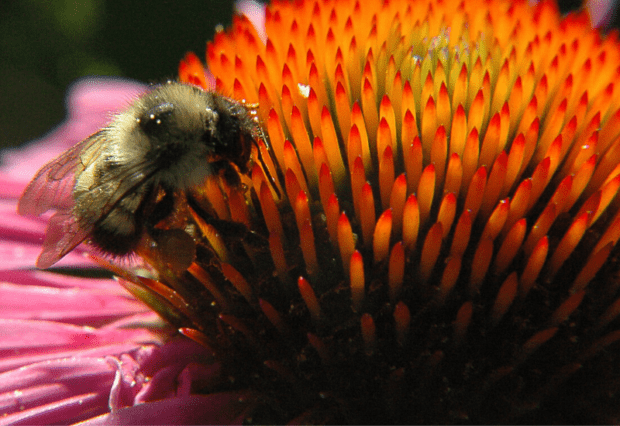
Native bumble bees are not only fuzzy and cute, they are terrific pollinators of tomatoes, sweet peppers, blueberries, and strawberries—to name a few crops that feed us. They have an edge over non-native honey bees as pollinators for certain plants, because they have longer tongues to reach into flowers. They also can fly in cool and cloudy weather, lower light, and get busy earlier in the spring and in the day than many bees.
If you care about the food on your table, it’s time to give back to bumble bees. More than a quarter (28%) of all North American bumble bees are at risk of extinction from habitat loss, disease, pesticides, and climate change. For example, the yellow-banded bumble bee in New York state has fallen in numbers by 99%–calling for drastic action. With help, the state can accelerate its work with farmers who set aside habitat that supports this and other bumble bees, and to enlist all gardeners to be pollinator-friendly.
Be a voice for wildlife!
Take Action!





















